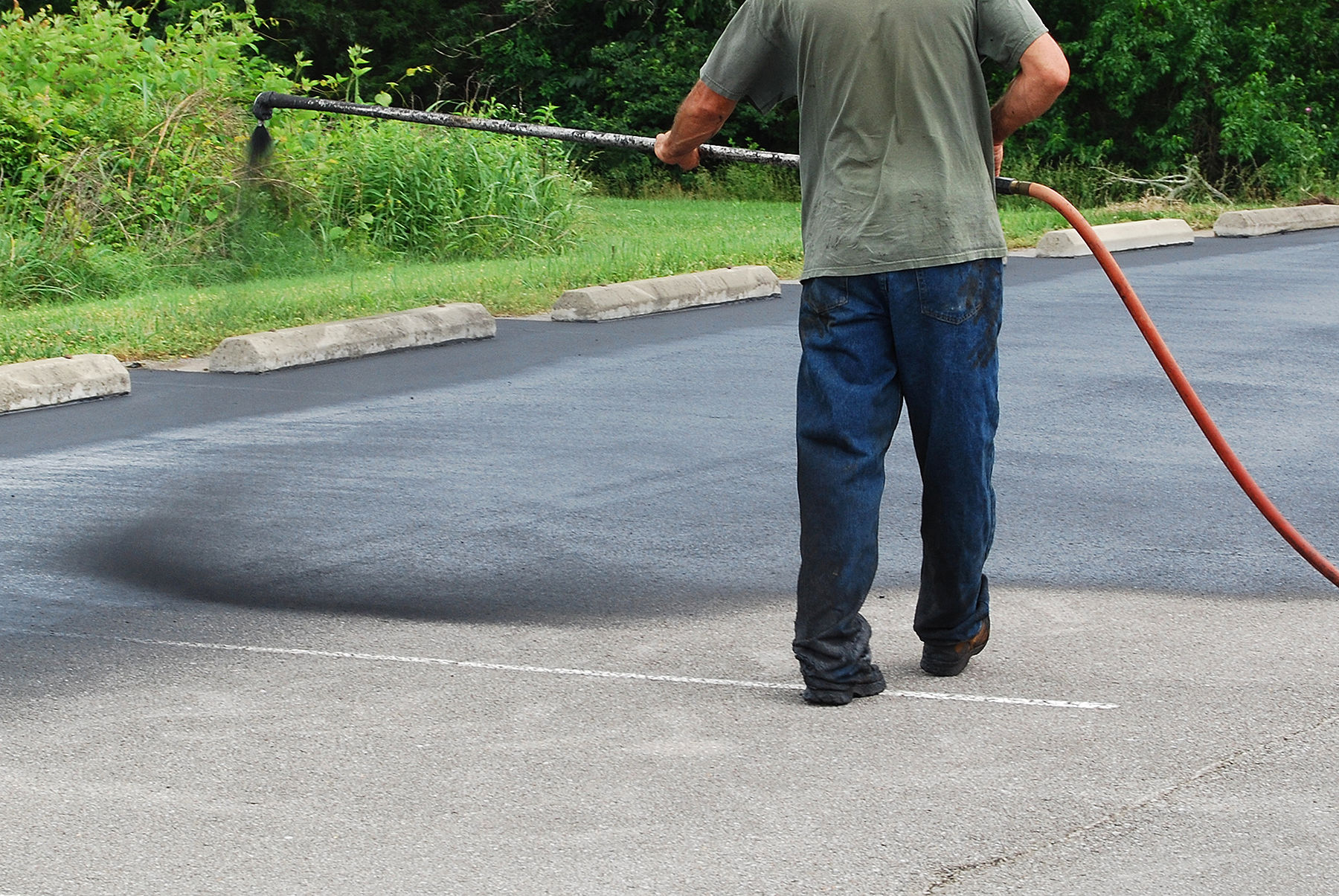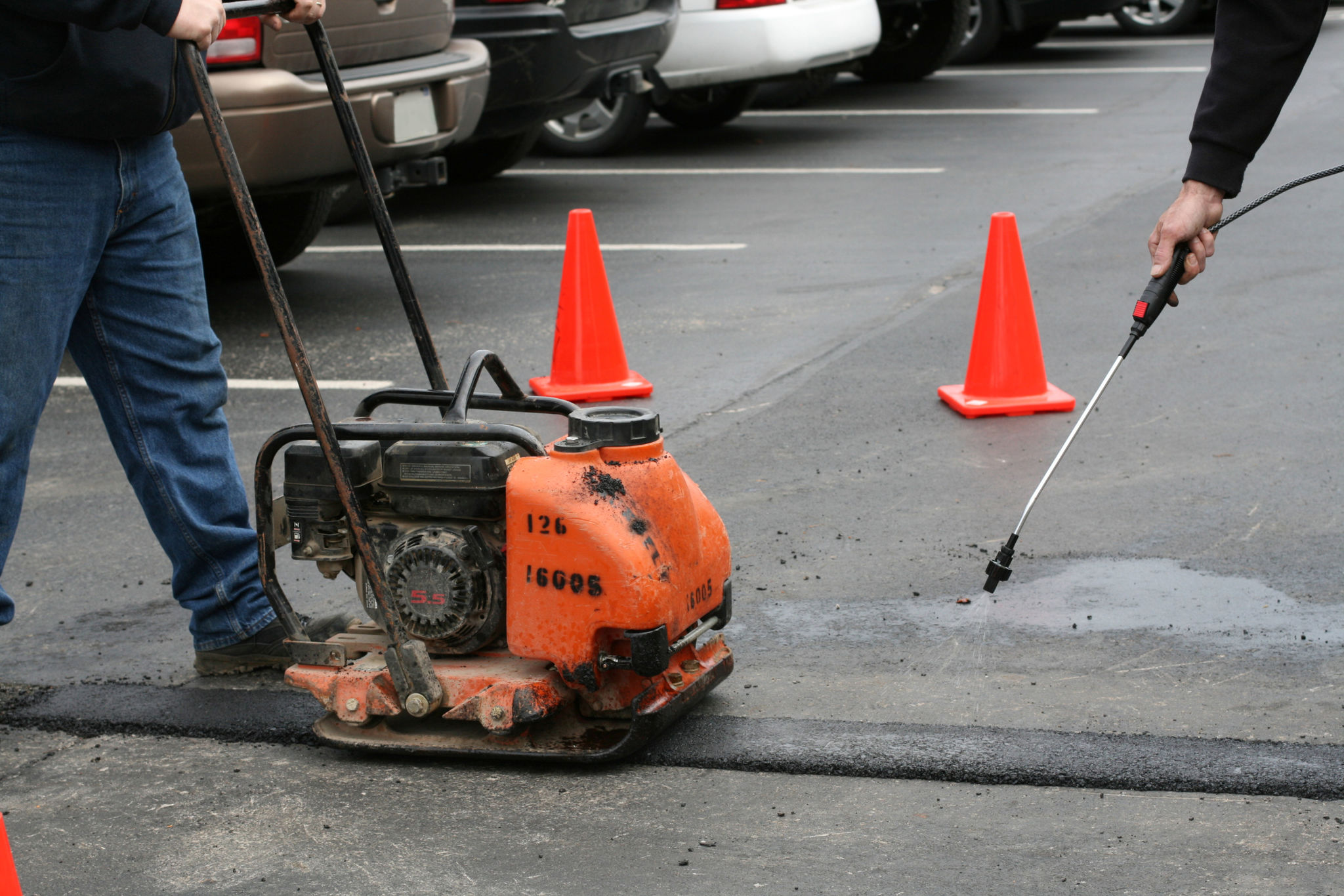How Sealcoating Protects Your Asphalt Investment: A Detailed Look
Understanding Sealcoating
Asphalt surfaces are a common choice for driveways, parking lots, and roads due to their durability and cost-effectiveness. However, like any investment, they require maintenance to ensure longevity. This is where sealcoating comes into play. Sealcoating is a protective layer applied over asphalt surfaces to shield them from damage caused by environmental factors and everyday wear and tear.
Sealcoating acts as a barrier against destructive elements such as UV rays, oil spills, and water penetration. By forming a protective layer, it prevents these elements from seeping into the asphalt, which can lead to cracks and potholes over time. Regular sealcoating not only prolongs the life of the asphalt but also enhances its appearance, giving it a smooth and fresh-looking finish.

The Benefits of Sealcoating
The advantages of sealcoating extend beyond mere protection. One of the primary benefits is its ability to reduce maintenance costs. By preventing damage, property owners can avoid costly repairs associated with asphalt deterioration. Additionally, sealcoating improves the surface's resistance to oxidation, delaying the aging process and keeping it looking new for longer.
Another significant benefit is its contribution to safety. Sealcoated surfaces offer better traction, reducing the risk of accidents caused by slippery conditions. This is particularly important for commercial properties where safety is a top priority. Moreover, sealcoating can fill in minor surface irregularities, creating a smoother driving experience.

Environmental Protection
Sealcoating also plays a role in environmental preservation. By preventing water seepage and minimizing oxidation, it reduces the need for frequent resurfacing. This not only saves resources but also cuts down on emissions associated with asphalt production and installation. For property owners committed to sustainable practices, regular sealcoating is an eco-friendly maintenance option.
When to Sealcoat
The timing of sealcoating is crucial for optimal results. Newly installed asphalt should be allowed to cure for at least 90 days before applying a sealcoat. After the initial application, it is recommended to sealcoat every two to three years, depending on traffic volume and environmental conditions.
Frequent inspections can help determine the right time for resealing. Look for signs of wear such as fading color, small cracks, or surface roughness. Addressing these issues promptly with sealcoating can prevent more significant damage down the line.

The Sealcoating Process
The process of sealcoating involves several key steps to ensure effective application. First, the asphalt surface must be thoroughly cleaned to remove dirt, debris, and any oil stains that could affect adhesion. Next, minor repairs should be made to address any cracks or potholes before the sealcoat is applied.
Once the surface is prepared, the sealcoat is applied using a brush, roller, or spray equipment. It's crucial to ensure an even application to provide consistent protection across the entire surface. After application, the sealcoat needs adequate time to dry and cure before being exposed to traffic.
Choosing a Professional Service
While some property owners may consider DIY sealcoating, hiring a professional service offers numerous advantages. Experienced contractors have access to high-quality materials and equipment that ensure a thorough and effective application. They also possess the expertise to handle unexpected challenges that may arise during the process.
By investing in professional sealcoating services, property owners can rest assured that their asphalt surfaces are receiving the best possible care. This not only maximizes the lifespan of their investment but also enhances curb appeal and overall property value.
